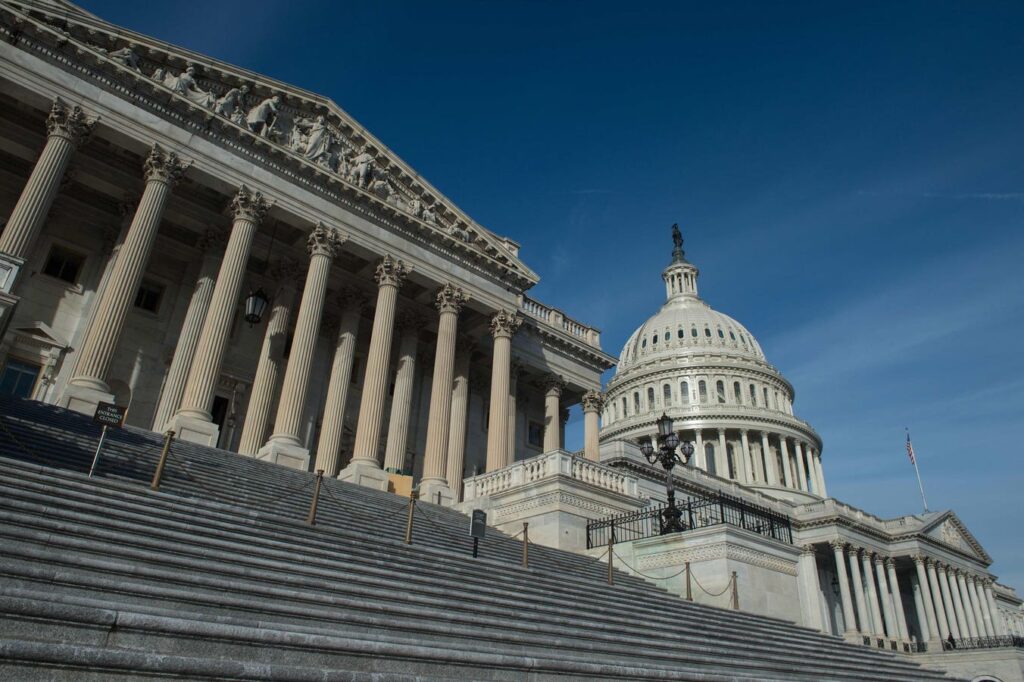The US Capitol is seen in Washington, DC, on January 3, 2018 before the opening of the second … [+]
AFP via Getty Images
History was made in the Senate last week when the Senate Banking, Housing, and Urban Affairs Committee voted 18-6 to advance a bill that would create a regulatory framework for stablecoins. The measure was the first time a Senate committee passed a major crypto bill, a signal of lawmakers’ serious intent to push significant crypto legislation into law this year. The two likely pieces to achieve for that goal are a stablecoin bill and a proposal to establish market structure regulations. Stablecoins are perceived as an easier lift, but the recent Senate vote left members optimistic about the potential to realize both objectives.
If signed into law, the Senate bill would create a split regulatory structure between state and federal agencies. States would only oversee issuers with less than $10 billion in market capitalization, with any issuers above that threshold subject to federal oversight. Depository institutions would be required to comply with Federal Reserve regulations, while the Office of the Comptroller of the Currency would oversee non-bank businesses. One of the changes made in the markup was to clarify that nonbanks would not be able to access Fed master accounts, a provision that banks fought to ensure despite the fintech’s industry opposition.
With the measure passed by the committee, the bill now heads to the Senate floor. Republicans must attract support from at least seven Democrats to clear the 60-vote threshold required to pass the bill on the floor. Reaching this mark should not pose too much difficulty as five Democrats backed the measure in the committee markup, and Senator Kirsten Gillibrand of New York is one of the bill’s sponsors, which suggests there are at least six Democrats who would likely vote yes. Other Democrats sounded open to supporting the bill during the markup despite eventually voting no, which may bode well for the legislation’s prospects.
Still, the top Democrat on the Senate Banking Committee, Senator Elizabeth Warren of Massachusetts, strongly criticized the measure in a recent statement. Warren continues to oppose its passage due to what she has described as insufficient consumer protections and anti-money laundering regulations. Warren maintained Democratic unity on several amendment votes during the markup. However, the split on advancing the bill suggests that other rank-and-file members are willing to go against her recommendations. Warren’s attacks may keep some Democrats from voting yes on the floor, but her opposition increasingly appears to be fighting an uphill battle.
Across Capitol Hill, no stablecoin bill has advanced in the House yet. But, a recent House Financial Services Committee hearing discussed the chamber’s draft, suggesting that such progress is likely only a matter of time. Still, the House and Senate versions differ on some provisions, most notably how large a role state regulators could play. The House version does not set the $10 billion threshold above which issuers would be subject to federal oversight. Resolving these differences may not happen until both chambers have passed their respective drafts in full chamber votes. Still, the two sides are aware of these divides, and all signs are that they intend to bridge the gap to find a solution that can pass both chambers and work for other stakeholders.
While the Senate has moved quickly on the measure and it has a strong chance of passage, the trickiest part remaining will be finding floor time to dedicate to passing it. Given the other competing priorities for congressional leadership, many of which demand more urgent attention, the availability of time may not come until this summer or fall. The process could be slowed as well by any prolonged inter-chamber negotiations. Still, come Congress’ August recess, the path forward for passing stablecoin legislation should be more evident, as by that point, the House Financial Services Committee will likely have marked up its draft. In addition, one or maybe both chambers may have held floor votes, depending on the progress of the other agenda items fighting for attention. The earliest passage of stablecoin legislation in Congress is likely at the end of July, but a more realistic timeline likely means passage in the fall.


